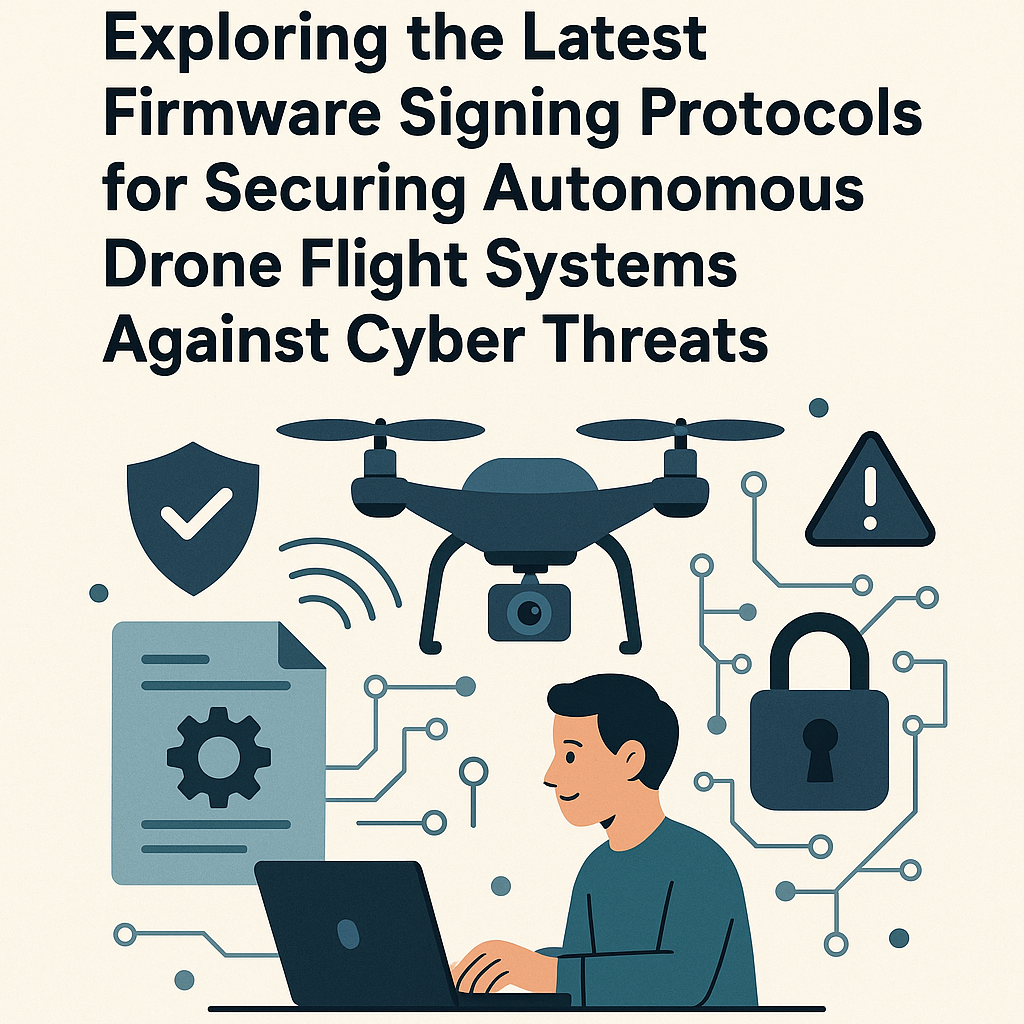Introduction
As autonomous drone technology continues to evolve, so do the cyber threats that target these systems. One critical aspect of securing drone operations is the implementation of firmware signing protocols. This blog post explores the latest firmware signing protocols designed to protect autonomous drone flight systems from cyber threats, ensuring safe and reliable operation in various environments.
Understanding Firmware Signing
Firmware signing is a security measure that involves digitally signing firmware updates to verify their authenticity and integrity. This process ensures that only legitimate and unaltered firmware is installed on the drone’s systems, significantly reducing the risk of malicious attacks.
How Firmware Signing Works
- Digital Signatures: Each firmware update is accompanied by a digital signature created using a private key. This signature can only be verified by the corresponding public key, which is embedded in the drone’s hardware.
- Verification Process: When a firmware update is received, the drone’s system checks the digital signature against the public key. If the signature is valid, the update is accepted; if not, it is rejected.
- Integrity Checks: In addition to verifying authenticity, firmware signing also ensures that the code has not been tampered with, providing an extra layer of security.
Latest Trends in Firmware Signing Protocols
With the rise of cyber threats targeting autonomous drones, several advanced firmware signing protocols have emerged to enhance security measures:
1. Hardware-Based Security Modules
Many modern drones are incorporating hardware-based security modules (HSMs) that securely store cryptographic keys and perform signing operations. This approach provides a robust defense against key extraction attacks.
2. Blockchain Technology
Blockchain is being explored as a means to enhance firmware signing protocols. By using a decentralized ledger, drones can authenticate firmware updates through a transparent and tamper-proof system. This can help in:
- Ensuring the provenance of firmware updates.
- Providing an immutable record of all firmware changes.
- Facilitating trust in multi-party scenarios where multiple stakeholders are involved.
3. Secure Boot Mechanisms
Secure boot mechanisms ensure that the drone only boots firmware that is authenticated and signed. This process is crucial in preventing unauthorized access to the drone’s operating system and firmware.
4. Over-the-Air (OTA) Updates
With the increasing use of OTA updates for drones, ensuring the security of these updates is vital. Firmware signing protocols for OTA updates typically involve:
- Encrypted communication channels to prevent interception.
- Robust validation of firmware signatures before installation.
Challenges in Implementing Firmware Signing Protocols
While firmware signing protocols significantly enhance drone security, there are challenges in their implementation:
1. Resource Constraints
Many drones, especially smaller models, have limited processing power and memory. Implementing complex signing protocols can strain these resources.
2. Supply Chain Vulnerabilities
The security of firmware signing also depends on the integrity of the supply chain. If any party in the chain fails to maintain security, the entire system can be compromised.
3. User Awareness and Compliance
Operators must be educated on the importance of firmware signing and ensure compliance with security protocols. This requires ongoing training and awareness programs.
Case Studies: Successful Implementation
Several companies have successfully implemented advanced firmware signing protocols to enhance the security of their autonomous drone systems:
- Company A: Developed a drone with an integrated HSM that securely manages cryptographic keys, providing a significant boost in firmware security.
- Company B: Utilized blockchain technology to create a tamper-proof record of all firmware updates, enhancing trust among users and stakeholders.
- Company C: Implemented secure boot mechanisms in its drones, ensuring that only verified firmware can be executed, thus preventing unauthorized access.
Conclusion
As the threat landscape for autonomous drone systems continues to evolve, the adoption of robust firmware signing protocols is crucial for ensuring operational security. The latest advancements, including hardware-based security modules, blockchain technology, and secure boot mechanisms, provide promising solutions to protect against cyber threats. However, challenges remain in implementation, and it is vital for drone operators to stay informed and compliant with these security protocols to safeguard their systems effectively.



